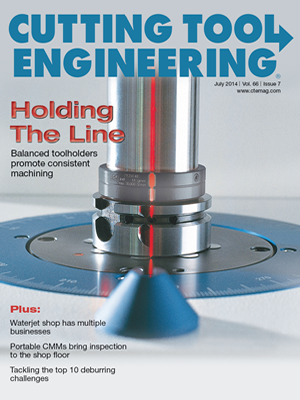What do baseball legend Ted Williams slugging his first big-league dinger, Batman comics hitting the streets and Germany attacking Poland to launch World War II have in common? They all occurred in 1939, the same year Ellis Brown, Charles W. Kling and Harold Heckamen founded Bremen (Ind.) Gray Iron Foundry Inc.
The company changed its name to Bremen Castings Inc. (BCI) in 1972 and added a machine shop in 1996. The Brown family continues to run the operation. James L. Brown followed in his father’s footsteps and, although retired, is still on the board of directors. CEO James E. Brown, third generation, took over the leadership role of BCI in 1987. Current President JB Brown is the fourth generation and is now in charge of overall operations at the company. With her graduation from Indiana University this spring, Jordan Brown officially joined the payroll, beginning her career as the fifth generation at BCI as inside sales manager.
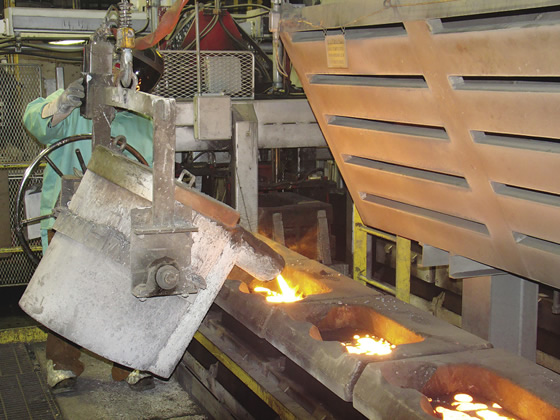
Molten metal flows into a casting at Bremen Castings.
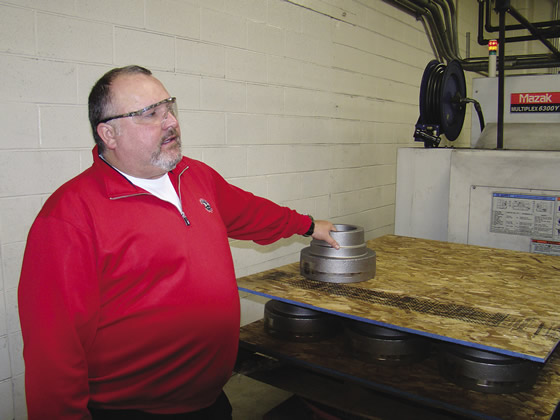
BCI President JB Brown is the fourth generation of the family to run the company.
Although BCI is celebrating its 75th anniversary and is steeped in family history, the company isn’t fond of hanging onto tradition as it continues to automate and otherwise enhance its green sand casting and CNC machining operations. That attitude for positive change is best summed up in BCI’s continuous-improvement motto: StatusQuoSucks!
“It’s how we run everything,” said JB Brown. “If you don’t like change, you will not survive in this company. The world is changing every day and your business has to change to keep up with the times, whether it’s about people, finance, law, whatever. If you’re going to stay status quo, you’re going to be left behind.”
Move to Machining
To help distinguish itself, improve the flow of work through the foundry and create additional revenue, BCI determined that opening its own machine shop was a no-brainer because it provided more value-added services for its customers, according to Brown. “Why should we be out looking for machine shops to machine castings for our customers when we can do it right here and be in charge?”
In addition, the green sand casting process can generate defects. (See sidebar on page 82.) “We used to send them to an outside machine shop; they would machine them and run into issues and all of a sudden we had a lot of back and forth,” Brown said. “So we decided to machine our own castings. We might not be here today if it wasn’t for having a machine shop. This enabled us to offer more value-added services for our current customers and generate new business going forward.”
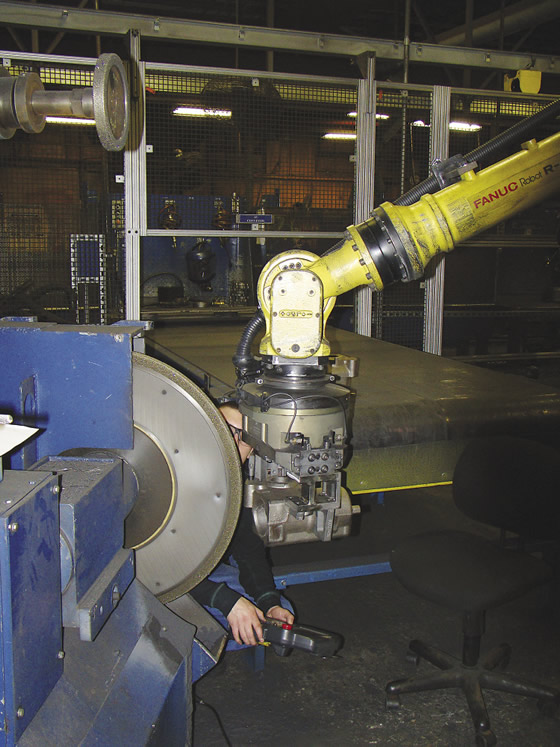
At BCI, castings are manually (below) and robotically ground (above) to remove parting lines, gates, risers and flash.
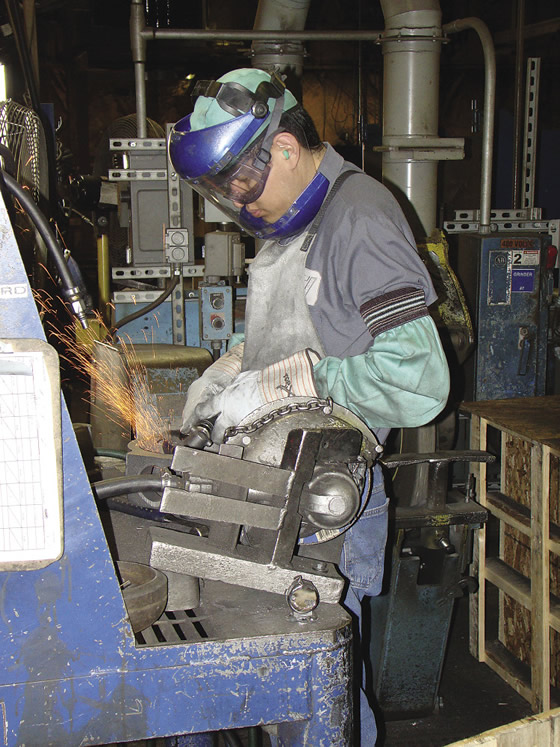
Nonetheless, he noted that among the approximately 2,100 foundries in the U.S., it’s uncommon for them to have their own machine shops. However, after seeing BCI’s success machining castings, a couple of competing foundries added shops, according to Brown, who pointed out that foundries tend to freely share information to assist others in the industry.
Until 4 years ago, the foundry facility housed BCI’s tightly packed machine shop, which consumed 15,000 sq. ft. The company decided to move it to a 55,000-sq.-ft. warehouse that had sat empty for about 20 years, after gutting the building, adding a new roof and revamping the facility at a cost of $3.5 million.
“Our customers would come to us and say, ‘Hey, would you like to do this project?’ and we always had to turn them down because we just didn’t have room to grow,” Brown said. The company still has room to expand in the machine shop’s building, and owns an additional 13 acres of adjacent land. For now, BCI rents on-site silos to area farmers.
BCI also rents machine tools—to itself. A separate entity, BCI Defense LLC, which Bremen Castings established in late 2012, uses them to produce firearm parts from 7075-T6 aluminum. “Legally, BCI Defense machines parts that have serial numbers. You can’t [make them into weapons] without other components, since that’s what’s considered a firearm,” Brown said about the serial- numbered parts.
In contrast, an upper receiver is a firearm part but not considered a firearm. Therefore, BCI can machine it, Brown explained. This year, BCI started targeting other markets as well, machining parts from steel billet and aluminum castings and is investigating Swiss-style machining.
The core work for the 19-person shop, however, remains machining the foundry’s gray and ductile iron castings, primarily for agricultural, heavy truck, lawn and garden, construction and oil-and-gas applications. Even for the foundry work, BCI functions as a job shop, machining about 1,150 different active casting with volumes from five to 10,000 pieces.
“We have to be able to change on the fly,” Brown said. “We have 40-some different job changes every day.”
Automated Abrasion
Although they are distinct facilities and perform different manufacturing processes, the foundry and machine shop are not run as separate businesses, Brown emphasized. That quickly resolves any machining issues by enabling, for example, the foundry’s head of quality to walk across the street to address a problem. “It’s nice to have that interaction instead of ‘I’ll e-mail you this picture and then catch a flight or drive to your location,’ ” he said.
As a result, returns of parts to the machine shop are virtually nonexistent, according to Brown. “What’s odd is we look at some of the other machine shops we deal with and we still return jobs to them but none to our own,” he said.
BCI, however, doesn’t perform all of its machining in the machine shop. Parting lines, gates, risers and flash on castings are ground in the foundry.
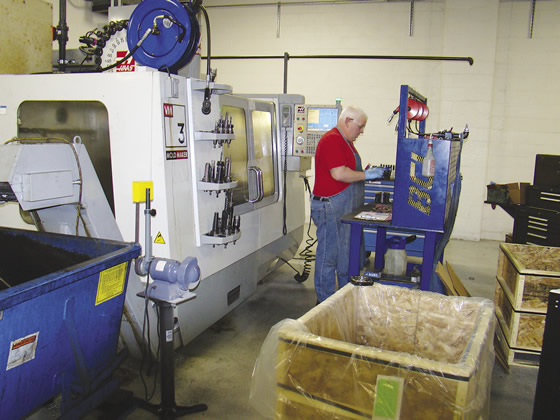
A Haas VM3 CNC vertical mill machines parts at BCI’s machine shop.
Traditionally, workers manually ground the ½- to 100-lb. (227-g to 45.4-kg) castings. After looking at the company’s accident report and evaluating safety in the grinding area, BCI decided to redesign the grinding department and started adding automation about 4 years ago. Grinding is now 50 percent automated, with seven robotic cells and two more that are ready to install. After a job is set up, an operator simply presents a casting to a robot for consistent grinding with a diamond-plated wheel.
“Our customers get more and more demanding every day. That’s fine but [it means] we have to change with it as well,” he said. Brown added that a lot of employees were skeptical and concerned about the robots at first, but now that they’re in place, everybody wants to be the “robot guy.”
Brown noted some of the robot cells have vision systems to measure IDs and ODs, and the foundry is starting to machine some features, such as drilling holes, to eliminate machining steps and bottlenecks. The robot cells have also helped BCI improve safety. “We’re at more than 1.5 million man-hours without a lost-time accident,” he said, adding that automation eliminated the safety concern about forklift traffic.
Healthy Workforce
Because attracting and retaining workers with the necessary skills is an ongoing challenge, keeping employees healthy and productive pays big dividends. Brown said BCI understands that and, as a result, opened an onsite wellness center in November 2012. It caters to the company’s 200 employees and their families. He estimates a 95 percent participation rate for those covered by the company’s insurance plan. Participants receive physicals at the no-cash wellness center and are rewarded with a reduced deductible for healthy behaviors, such as maintaining a healthy blood pressure, cholesterol level and body mass index. “If you’re a non-nicotine user, you get a $500 annual credit,” he said.
Brown added that the center’s medical professionals and participants jointly establish achievable goals, such as losing a certain percentage of weight. “You reach that and you get a check for $200,” he said.
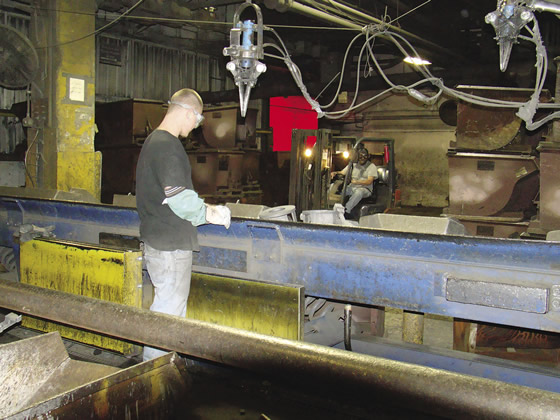
The degating line at BCI’s foundry (above) and castings in a grinding room (below).
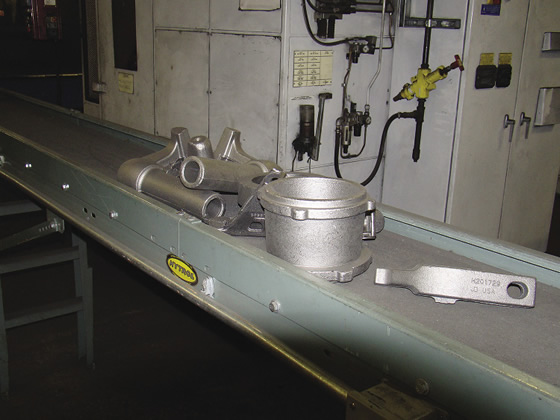
The notable success stories, Brown said, include one person who lost more than 100 lbs. Another is even more dramatic. “We had one gentleman who hadn’t had a physical in 27 years and finally went in for one. The next day he had quadruple-bypass surgery that saved his life.”
To accommodate various shifts, the center, which also serves as a resource for health-related information, is open early 2 days a week and late 2 days a week. “We try to make it simple. The reward is knowing we have a safer workforce because people are sleeping better and have their blood pressure under control,” he said.
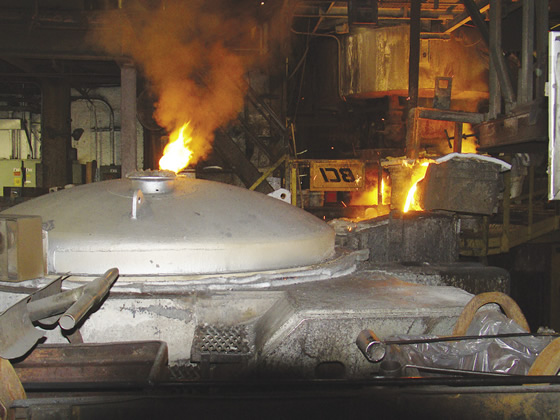
The “Weber grill” in operation at BCI’s foundry.
According to Brown, the town of Bremen, with a population of about 5,500, plays a role in the company’s success by helping BCI build a sense of community. The company reciprocates by participating in blood drives, supporting the police and fire departments, sponsoring youth sports teams, helping with park expansions and hosting community picnics. “We sponsor as many things as we can to be involved with the community and give back,” he said. “We try to get other people involved in the community as well.”
Others outside the company influence BCI’s leadership as well. One person is rock guitarist and avid hunter Ted Nugent, who Brown said he and his father have known for more than a decade. He added that his father and his mother, Maryln Brown, do much of the photography for Nugent’s albums, books and personal appearances. JB Brown described the “Motor City Madman” as hardworking, dedicated, educated and one who vigorously promotes what he feels is important. “He’s loud, aggressive, in-your-face, but he gets the point across. He’s like our SQS—not for everybody,” Brown said. “Our two worlds collided and it had a very strange formula in the beginning, but the outcome has been pretty cool.” CTE
For more information about Bremen Castings Inc., call (800) 837-2411 or visit www.bremencastings.com.
About the Author: Alan Richter is editor of CTE. Contact him at (847) 714-0175 or [email protected].
Cast in green sand
To make green sand molds for its gray and ductile iron castings, Bremen Castings Inc. mixes Lake Michigan dune sand with bonding clays, explained JB Brown. “Basically, your bond is kitty litter. It comes from the same place.”
A pattern is placed between two halves of a flask in a mash plate machine, he added. The top half forms the “cope,” and the bottom half is the “drag.” The sand is then squeezed against the pattern to create the tooling, or mold cavity, that the molten metal will fill.
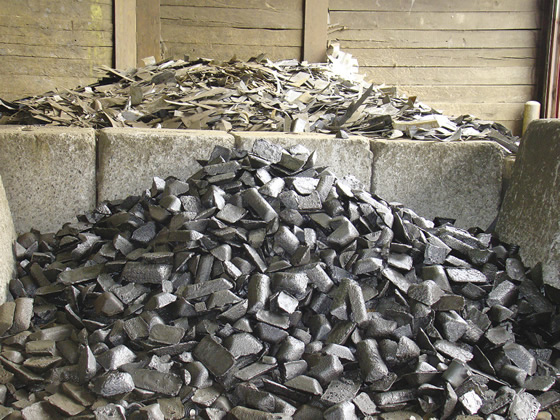
Bremen Castings uses 92 percent recycled material to make its castings.
“It’s one of the cheapest ways to do near-net-shape castings,” Brown said.
He added BCI uses 92 percent recycled ferrous material, such as scrap steel and pig iron, to make the castings. Various alloys are added to suit a customer’s job specification.
After the molten metal solidifies and the casting cools in the mold, the casting goes through a shaker, which causes the green sand to fall off. The casting then gets blasted with fine steel shot material and is ground to remove parting lines and unwanted edges.
A casting might then be machined, painted or simply shipped. “We make the castings that Haas machines sit on,” Brown said. “Those don’t get machined and just have to look good cosmetically.”
The various paths through the production system can create challenges, however, when the shop looks to enhance efficiency. “When we first started our continuous-improvement program,” Brown said, “we had a lot more streams and we narrowed it down to certain families.”
—A. Richter
Related Glossary Terms
- alloys
alloys
Substances having metallic properties and being composed of two or more chemical elements of which at least one is a metal.
- computer numerical control ( CNC)
computer numerical control ( CNC)
Microprocessor-based controller dedicated to a machine tool that permits the creation or modification of parts. Programmed numerical control activates the machine’s servos and spindle drives and controls the various machining operations. See DNC, direct numerical control; NC, numerical control.
- flash
flash
Thin web or film of metal on a casting that occurs at die partings and around air vents and movable cores. This excess metal is due to necessary working and operating clearances in a die. Flash also is the excess material squeezed out of the cavity as a compression mold closes or as pressure is applied to the cavity.
- grinding
grinding
Machining operation in which material is removed from the workpiece by a powered abrasive wheel, stone, belt, paste, sheet, compound, slurry, etc. Takes various forms: surface grinding (creates flat and/or squared surfaces); cylindrical grinding (for external cylindrical and tapered shapes, fillets, undercuts, etc.); centerless grinding; chamfering; thread and form grinding; tool and cutter grinding; offhand grinding; lapping and polishing (grinding with extremely fine grits to create ultrasmooth surfaces); honing; and disc grinding.
- land
land
Part of the tool body that remains after the flutes are cut.
- milling machine ( mill)
milling machine ( mill)
Runs endmills and arbor-mounted milling cutters. Features include a head with a spindle that drives the cutters; a column, knee and table that provide motion in the three Cartesian axes; and a base that supports the components and houses the cutting-fluid pump and reservoir. The work is mounted on the table and fed into the rotating cutter or endmill to accomplish the milling steps; vertical milling machines also feed endmills into the work by means of a spindle-mounted quill. Models range from small manual machines to big bed-type and duplex mills. All take one of three basic forms: vertical, horizontal or convertible horizontal/vertical. Vertical machines may be knee-type (the table is mounted on a knee that can be elevated) or bed-type (the table is securely supported and only moves horizontally). In general, horizontal machines are bigger and more powerful, while vertical machines are lighter but more versatile and easier to set up and operate.
- parting
parting
When used in lathe or screw-machine operations, this process separates a completed part from chuck-held or collet-fed stock by means of a very narrow, flat-end cutting, or parting, tool.


